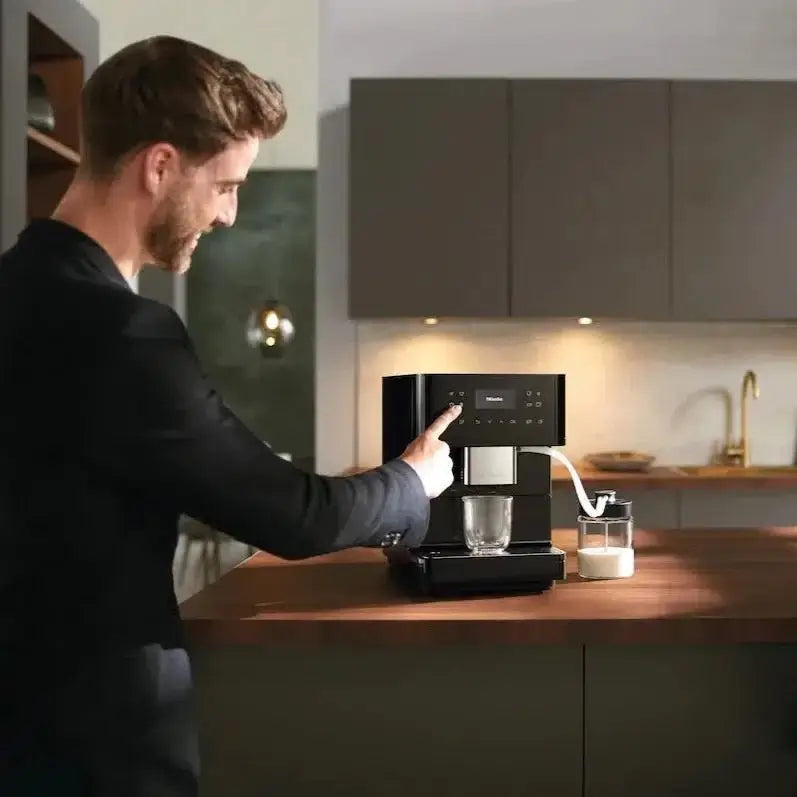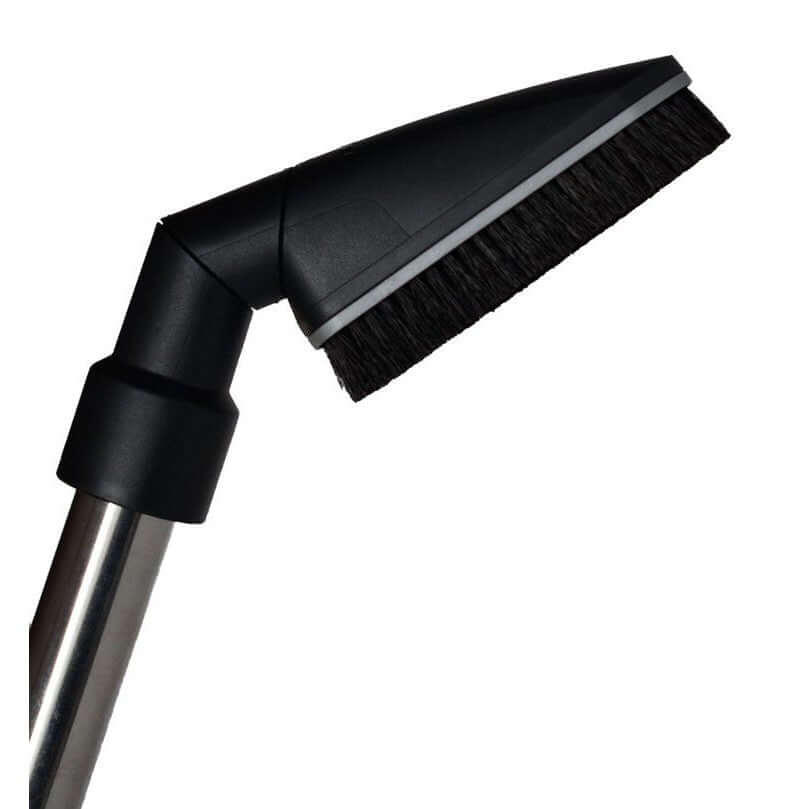How to Choose the Perfect Vacuum
If you're in the market for a new vacuum cleaner but find yourself overwhelmed by conflicting consumer ratings and online reviews, this comprehensive buying guide is tailor-made for you. Over the next few pages, we'll navigate through the maze of information to help you discern between genuine performance and mere hype, guiding you towards selecting the ideal high-quality vacuum that suits your flooring needs while staying within your budget.
However, before diving in, let's dispel two prevalent misconceptions about vacuums.
Myth #1: The Illusion of the "Ultimate Vacuum"
It's essential to understand that there's no universally superior vacuum cleaner. While there are notable discrepancies in quality and functionality, vacuums come in various configurations and boast different features. What works excellently on carpets might scratch hardwood floors, and what's quiet might be hefty, while lightweight models might produce noise. This diversity explains why ten different reviews of the same vacuum could yield polarized opinions. Your mom's favorite vacuum might be entirely unsuitable for your home's needs.
Myth #2: The Fallacy of "Incredible Suction"
Beware of misleading marketing tactics such as emphasizing "horsepower" or "amps." These metrics provide no meaningful insight into a vacuum's suction power and performance. Instead, focus on CFM (cubic feet of airflow per minute) – the true indicator of suction strength, measuring how much air the vacuum can intake every minute. A respectable vacuum typically offers around 100 CFM. While there are a few subpar models on the market with 40-60 CFM, most modern vacuums hover around the 100 CFM mark, with top-tier ones ranging between 120-150 CFM.
The reality is, the era of suction supremacy has reached its conclusion. Anything surpassing 100 CFM provides more than sufficient suction power for any cleaning task. Moreover, advancements in suction strength have plateaued over the last decade. At 150 CFM, a well-engineered vacuum will adhere so firmly to the carpet surface that it becomes challenging to maneuver. Therefore, once you've verified that the vacuum of interest offers around 100 CFM, prioritize other critical factors such as material quality, filtration efficiency, and ergonomic design.
In an eCommerce landscape often driven by mass volume and quick sales, Best Vacuum prioritizes top-of-the-line product selections and comprehensive product knowledge backed by customer care. For nearly half a century, Best Vacuum continues to set the standard for excellence in eCommerce, providing a superior product selection coupled with an unwavering commitment to the customer experience.
Step 1: Know Your Floors
Choosing the right vacuum for your home depends greatly on the type of flooring you have. For instance, a condo in Arizona with predominantly ceramic tile necessitates a different vacuum compared to a home in Ohio adorned with wall-to-wall plush carpeting. Therefore, before embarking on your vacuum search, it's crucial to assess your home and recognize the various flooring types, paying particular attention to carpets and rugs.
Contemporary carpets and rugs offer a diverse array of styles beyond the traditional cut-pile, wall-to-wall carpets we're accustomed to. From looped and knotted to twisted and woven varieties, these modern options demand a more nuanced approach to cleaning. In fact, some carpet warranties stipulate specific vacuum requirements, failure to adhere to which could void the warranty. It's prudent to double-check the carpet material and measure the pile length. Special care is warranted for wool carpets or those with a pile exceeding 1 inch.
Here's a breakdown of different carpet styles and the corresponding vacuum types best suited for them:
- Loop (knotted yarn): Upright or Canister with extra soft bristle brush
- Cut Pile (cut yarn): Upright or Canister with heavy-duty motorized brush
- Frisee (twisted yarn): Upright or Canister with adjustable height
- Woven (needlepoint): Canister with suction-only rug tool
- Wool Loop: Canister with suction-only rug tool
- Wool Pile: Upright or Canister with extra soft-bristle brush
- Silk: Canister with suction-only rug tool
- Sisal: Canister with specialty tool
- Shag (2 inches or more): Canister with shag rake tool
While most homes typically feature one or two carpet types, if you have a diverse array of carpeting and bare floors, opt for a vacuum equipped with tools suitable for your most delicate rugs. In such cases, a canister vacuum often emerges as the preferred choice due to its versatility across multiple carpet types, leading us to the next step in your vacuum selection process.
In an eCommerce landscape often driven by mass volume and quick sales, Best Vacuum prioritizes top-of-the-line product selections and comprehensive product knowledge backed by customer care. For nearly half a century, Best Vacuum continues to set the standard for excellence in eCommerce, providing a superior product selection coupled with an unwavering commitment to the customer experience.
Step 2: Canister or Upright?
When deciding between a canister or an upright vacuum, the primary consideration is your flooring type. If your space features more bare floors than carpet, a canister vacuum is typically the better choice. Conversely, if wall-to-wall carpeting dominates, an upright vacuum may suffice, although additional factors warrant consideration beyond mere flooring type.
Traditionally, upright vacuums have been the favored style in the United States, while canisters reign supreme in many other parts of the world. However, there's been a resurgence of interest in canister vacuums in the U.S. recently. People are recognizing the multitude of advantages offered by canisters over traditional uprights:
1. Weight: Canisters, with their main body and motor positioned behind the user, are significantly lighter to push and pull, usually weighing only two or three pounds. In contrast, most uprights weigh between 15 to 20 pounds, making canisters far gentler on the back and shoulders.
2. Versatility: Canisters typically offer a wider range of brushes and accessories, allowing for greater adaptability to various flooring types. Moreover, their ability to effortlessly clean beneath furniture reduces the need for constant rearrangement and readjustment of hoses and tools, as is often required with uprights.
3. Easier Stair Cleaning: Maneuvering an upright vacuum on stairs can be cumbersome and precarious. Many modern canisters are designed to securely sit on stairs while you vacuum with the extended hose, simplifying the task. After cleaning a few stairs, you can conveniently place the canister on a step and continue with ease.
While canisters boast numerous advantages, uprights offer one significant convenience: their one-piece design. Once accustomed to operating a canister, many users find it hard to revert to uprights. However, for some individuals, the simplicity of an upright is preferred. If your space primarily features carpeting and you're averse to using a canister, sticking with an upright is advisable. Just ensure it includes all the necessary features and accessories to best suit your flooring needs.
Step 3: Bagged or Bagless?
Bagless vacuums have a lot going for them, not the least of which is very low operating costs because you don’t have to buy bags. But on the flip side, they do require more maintenance; bins must be emptied, interior parts wiped down and filters washed and dried. All this is well worth it to some people, while others prefer the ease of just dropping a bag into the garbage bin.
If there are people in your home who have serious allergies or asthma, we recommend getting a sealed HEPA vacuum with a bag. A fully sealed bagged vacuum is much more hygienic and exposes the user to significantly less dust during maintenance.
The bagged –vs- bagless debate rages on, but one thing is certain, if you want a high-quality vacuum and you want a bagless vacuum, there is only one product that meets both those criteria: Dyson. Dyson simply makes the best quality bagless vacuum you can buy and is the only bagless vacuum we recommend.
Step 4: Establish Your Budget
Determining your budget for a quality vacuum is crucial for long-term satisfaction. Aim for a range between $399 and $899 to secure a durable, well-made vacuum that can endure 10-20 years of regular use. While this investment might initially seem significant, considering the frequent use of a vacuum, the cost equates to just $5 per month for a superior cleaning tool that offers enhanced performance and durability.
For homes predominantly featuring bare floors and area rugs, quality vacuums can be found in the $300 range. However, for wall-to-wall carpeting, expect to start at a slightly higher price point due to the complexity of revolving brush systems.
Below is a breakdown of the best options within different budget ranges:
- Under $399: Quality vacuums in this price range are scarce, primarily suited for homes with bare floors, area rugs, or very flat carpeting. For wall-to-wall carpeting and a quality vacuum, consider increasing your budget to $399 or more.
- $399-$699: This range offers the sweet spot for acquiring a quality vacuum at a reasonable price. While you may not receive all the extra features, you'll benefit from durable materials, robust motors, and excellent performance.
- $700 & Up: At the top end of the market, you'll find vacuums equipped with the finest features. While basic performance and quality remain consistent with mid-range models, top-tier vacuums offer superior fit and finish, quieter operation, advanced filtration, and additional conveniences such as automatic suction control and illuminated floor tools. While not essential, these extra features can greatly enhance the vacuuming experience if your budget permits.
Step 5: Selecting a Brand
Amidst the hundreds of vacuum models available in the U.S., only a select few major brands truly stand out. Among them are Hoover, Eureka, Dirt Devil, Royal, Bissell, Panasonic, Oreck, Kenmore, Miele, SEBO, Dyson, and Electrolux. While smaller brands exist, they often offer re-badged versions of other vacuums or lack the quality and support needed to be viable options.
Of these brands, only three are recognized as "premium quality": Miele, SEBO, and Dyson. These brands excel across five key criteria:
1. Superior Materials (ABS plastic, stainless steel)
2. Superior Durability (10+ years motors, crush-proof hoses, geared belts)
3. Superior Design (ergonomic handles, height-adjustable wands, rubber wheels)
4. Superior Filtration (True HEPA filters, sealed body, top-mounted exhaust)
5. Superior Warranty (5-10 years depending on the model)
Each brand specializes in different areas. Miele is a German manufacturer renowned for offering top-quality vacuums across a wide range of models and price points. Miele boasts the longest life expectancy (20 years) and the highest filtration available in residential vacuum cleaners. SEBO is another German manufacturer recognized for producing high-quality, powerful vacuums with rugged build quality and a 5-year warranty. SEBO vacuums are esteemed for their reliability and durability. Regardless of which brand best suits your needs, following the above advice will empower you to confidently select a high-quality vacuum that aligns with both your flooring type and budget.

























